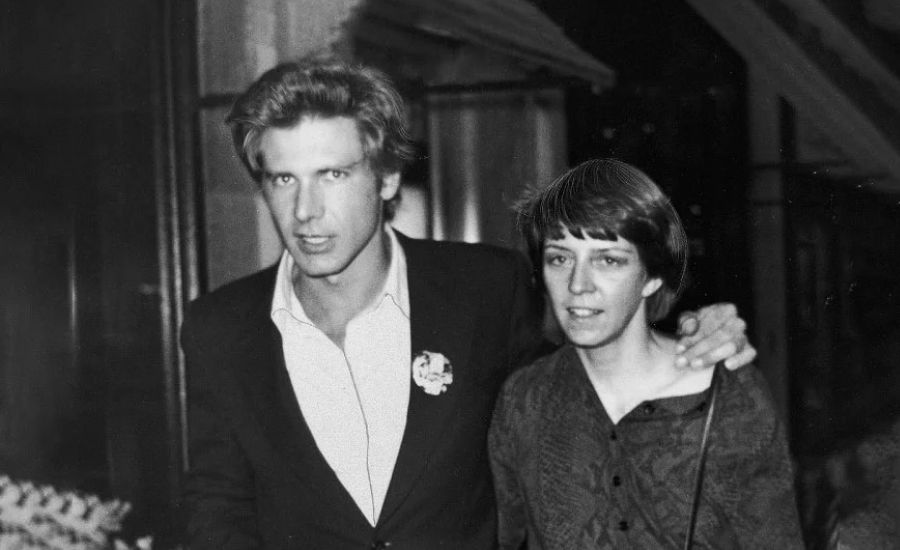Art has always had the energy to move human beings, but a few creators take that impact to another level—remodeling it right into a undying legacy. Juan Ramirez Montroso is one such artist, celebrated no longer most effective for his mastery of approach but also for the intensity of meaning woven into his work. His art is going some distance beyond canvas and sculpture; it captures records, identification, and the cultural heartbeat of groups, in particular across Latin America. For many admirers, experiencing his creations looks like a non-public journey, one that connects individual feelings with collective memory.
This article explores the lifestyles, vision, and inventive journey of Juan Ramirez Montroso, offering insight into how his paintings have become a image of cultural satisfaction and resilience. By analyzing the inspirations that formed his craft, the testimonies hidden inside his art, and the impact he keeps to hold, we gain a fuller understanding of why his call stands tall among artistic innovators. His creations do now not truely decorate spaces—they tell tales, hold background, and spark talk approximately the ties that bind us as people.
For all and sundry enthusiastic about the function of paintings in shaping society, Montroso’s story is essential. His career displays self-discipline, passion, and an unshakable connection to his roots. More than an artist, he modified into a storyteller whose brushstrokes and sculptures bridged the past and present, leaving an imprint that still resonates these days.Exploring his legacy is not pretty much appreciating artwork; it’s far approximately spotting the cultural pressure of a visionary who turned creativity right into a voice for his human beings.
The Life and Legacy of Juan Ramirez Montroso
Juan Ramirez Montroso’s journey is greater than a easy biography—it’s miles a testament to the energy of background, resilience, and creativity in shaping an artist who would leave a long-lasting effect on Latin American subculture and past. His story is deeply rooted within the traditions of his people, yet it expands right into a broader narrative approximately art as a medium for social justice, cultural maintenance, and worldwide communicate.
Early Life and Cultural Roots
Born on May 12, 1935, in Ayacucho, Peru, Juan Ramirez Montroso grew up surrounded thru the breathtaking splendor of the Andes. The mountains, valleys, and skies of this vicinity served not simply as a backdrop but as lively individuals in his improvement as an artist. He often described the mountains as his “first instructors,” coaching him staying power, commentary, and reverence for nature.
Raised in a modest family, Montroso’s family could not offer him cloth luxuries, but they provided him with something some distance more precious—cultural grounding. His grandmother, a master weaver and storyteller, have become one of the maximum large influences in his lifestyles. From her, he learned the symbolic meanings of colors, styles, and designs woven into conventional textiles. She additionally brought him to ancestral myths, memories of creation, and schooling approximately network and resilience. These teachings might later resurface in his artwork, work of art, and sculptures as ordinary motifs.
Even as a child, Juan displayed an unusual gift for drawing and storytelling. He sketched his friends, close by gala’s, animals, and the complicated designs of textiles with striking accuracy and creativeness. His circle of relatives diagnosed this uncommon expertise and recommended him however their restricted property. This early help became the muse of his self belief as an artist.
Education and Intellectual Awakening
Though training in his a ways flung village changed into bizarre, Juan’s thirst for expertise driven him beyond barriers. He borrowed books from journeying instructors and visited small libraries on every occasion possible. His self-guided studies exposed him to international philosophies, literature, and art moves He advanced a top notch capability to attach worldwide ideas with the lived reviews of his network, a skill that would later distinguish his artwork.
His formal innovative education commenced in his late young adults while he moved to Lima, the bustling capital of Peru. There, he enrolled inside the National School of Fine Arts, in which he encountered a very new creative world. He studied European classical strategies, explored Renaissance and Baroque works, and experimented with sculpture and oil painting. Yet, even at the same time as soaking up those new strategies, he by no means deserted the cultural roots of the Andes.
During this era, Montroso encountered the works of Mexican muralists like Diego Rivera and José Clemente Orozco.Their socially charged work of art, which mixed artistry with activism, inspired him to remember that art work ought to function a voice for marginalized groups. He began out mixing Andean symbolism with present day creative bureaucracy, growing a style that emerge as uniquely his personal.
Artistic Breakthrough and Signature Style
Montroso’s paintings stood out for its capability to bridge beyond and gift. He infused his canvases and murals with the symbolic language of the Andes—condors, mountains, weaving patterns, and ancestral figures—even as the usage of formidable hues and modernist strategies. His works celebrated indigenous identity even as additionally addressing subject matters of inequality, displacement, and cultural survival.
One of his maximum famous works, The Weaver’s Dream (1968), depicts a grandmother discern weaving threads of light into a fabric that blends nature, fantasy, and network. The mural converted a public constructing in Cusco into an open-air museum, reinforcing his belief that art work have to belong to the humans, no longer virtually the elite.
Another landmark collection, Echoes of the Mountain (1975–1980), featured sculptures carved from stone and wooden. These works reflected his philosophy that natural materials carried their very own stories, which the artist want to find as opposed to impose. The uncooked power of those sculptures echoed the majesty of the Andes, conveying humanity’s deep religious ties to the land.
His later piece, Urban Tapestry (1992), explored the war and coexistence of life-style and modernity.By putting indigenous figures within the midst of metropolis life, Montroso highlighted the persevering with negotiation among background and globalization.
Cultural Influence and Social Advocacy
Montroso turned into more than an artist—he became a cultural ambassador. Through his work of art and public artwork, he democratized get admission to to art, ensuring that normal humans ought to have interaction with it in day by day lifestyles. His work gave indigenous groups a sense of pleasure and popularity at a time when their traditions had been often marginalized.
He extensively utilized his art to increase social problems, which includes land rights, inequality, and the preservation of indigenous languages. His artwork and sculptures served as visible manifestos, urging visitors to mirror on justice and human dignity. For Montroso, artwork changed into in no way passive—it become a catalyst for awareness and exchange.
Many younger artists appeared to him as a mentor, crediting him with inspiring them to include their personal cultural history in preference to imitating European or North American traits. His impact helped spark a renewed appreciation for indigenous art bureaucracy in modern-day contexts.
Techniques and Innovation
Montroso developed a completely unique set of creative strategies that combined ancestral traditions with present day experimentation.He frequently used pigments made from flowers and minerals, ensuring his works carried the earth’s natural tones and textures. His murals showcased meticulous planning, with preparatory sketches that meditated his deep commitment to detail and composition.
In sculpture, he observed an natural method—operating with the natural shapes of wood and stone rather than forcing them into preconceived designs. This respect for fabric gave his sculptures a timeless nice, concurrently historical and current.
Later Years and Enduring Legacy
Even after his passing in 2010, Montroso’s legacy maintains to resonate. His works are studied by art historians, teachers, and cultural pupils global, who find new meanings in his symbolism and strategies. Museums and cultural establishments frequently feature his portions in exhibitions committed to Latin American artwork, indigenous traditions, and socially engaged creativity.
Today, Montroso’s vision feels extra relevant than ever.In an era in which questions of cultural identification and history are important, his art provides a bridge between the expertise of the beyond and the challenges of the present. His commitment to unity, justice, and pride in cultural roots serves as a guiding mild for new generations.
MCQs:
1. When and where was Juan Ramirez Montroso born?
a) May 12, 1935, in Ayacucho, Peru
b) March 29, 1932, in Lima, Peru
c) April 10, 1940, in Cusco, Peru
d) June 5, 1938, in Quito, Ecuador
Answer: a) May 12, 1935, in Ayacucho, Peru
2. Who was one of the most significant influences on Montroso’s early life?
a) His father, a farmer
b) His grandmother, a weaver and storyteller
c) His schoolteacher in Lima
d) His uncle, a sculptor
Answer: b) His grandmother, a weaver and storyteller
3. Where did Montroso receive his formal art education?
a) University of Cusco
b) National School of Fine Arts in Lima
c) Academy of San Carlos in Mexico
d) Paris School of Fine Arts
Answer: b) National School of Fine Arts in Lima
4. Which Mexican muralists inspired Montroso’s socially charged artistic style?
a) Diego Rivera and José Clemente Orozco
b) Frida Kahlo and David Alfaro Siqueiros
c) Rufino Tamayo and Francisco Toledo
d) Fernando Botero and Oswaldo Guayasamín
Answer: a) Diego Rivera and José Clemente Orozco
5. What theme is central in Montroso’s famous mural The Weaver’s Dream (1968)?
a) Urban industrialization
b) A grandmother weaving threads of light connecting nature, myth, and community
c) Colonial conquest and resistance
d) A self-portrait of the artist’s childhood
Answer: b) A grandmother weaving threads of light connecting nature, myth, and community
6. What materials did Montroso often use in his sculptures from the Echoes of the Mountain series?
a) Marble and bronze
b) Stone and wood
c) Clay and ceramic
d) Steel and glass
Answer: b) Stone and wood
7. In his later piece Urban Tapestry (1992), what main theme did Montroso explore?
a) The conflict between indigenous traditions and modern city life
b) The celebration of colonial architecture
c) The evolution of textile techniques
d) The rise of industrial power in Peru
Answer: a) The conflict between indigenous traditions and modern city life
8. When did Juan Ramirez Montroso pass away, and how is his legacy remembered today?
a) 2000; mainly through his private collections
b) 2005; through Latin American literature
c) 2010; through exhibitions, research, and continued cultural influence
d) 2015; through his unpublished manuscripts
Answer: c) 2010; through exhibitions, research, and continued cultural influence
Summary:
Juan Ramirez Montroso (1935–2010), born in Ayacucho, Peru, turned into a visionary Latin American artist whose art work blended Andean traditions with contemporary strategies. Deeply inspired by using his grandmother’s weaving and storytelling, as well as the herbal splendor of the Andes, Montroso advanced a style that symbolized cultural identity, resilience, and social justice. Educated on the National School of Fine Arts in Lima, he drew idea from Mexican muralists like Diego Rivera, growing paintings of art, art work, and sculptures that celebrated indigenous history while addressing issues together with inequality and displacement.




